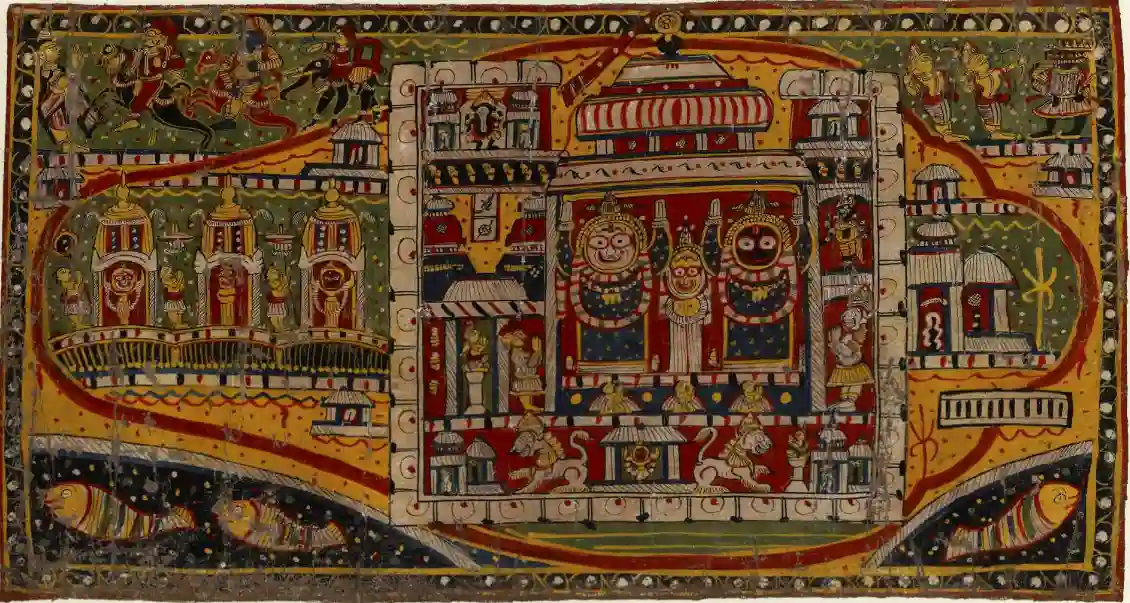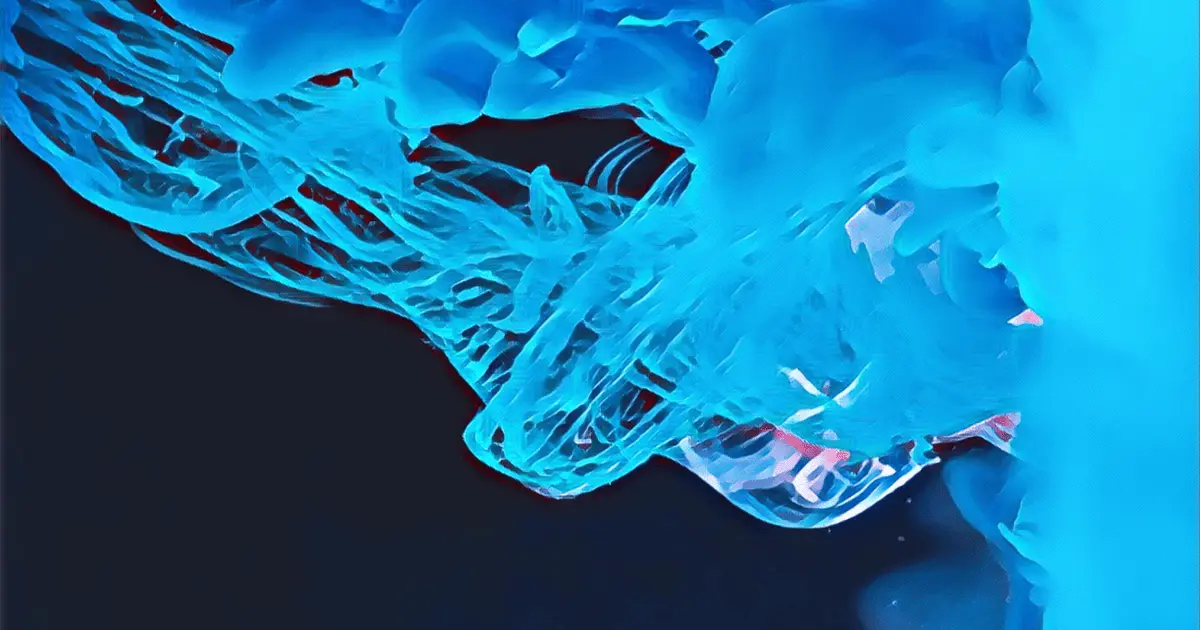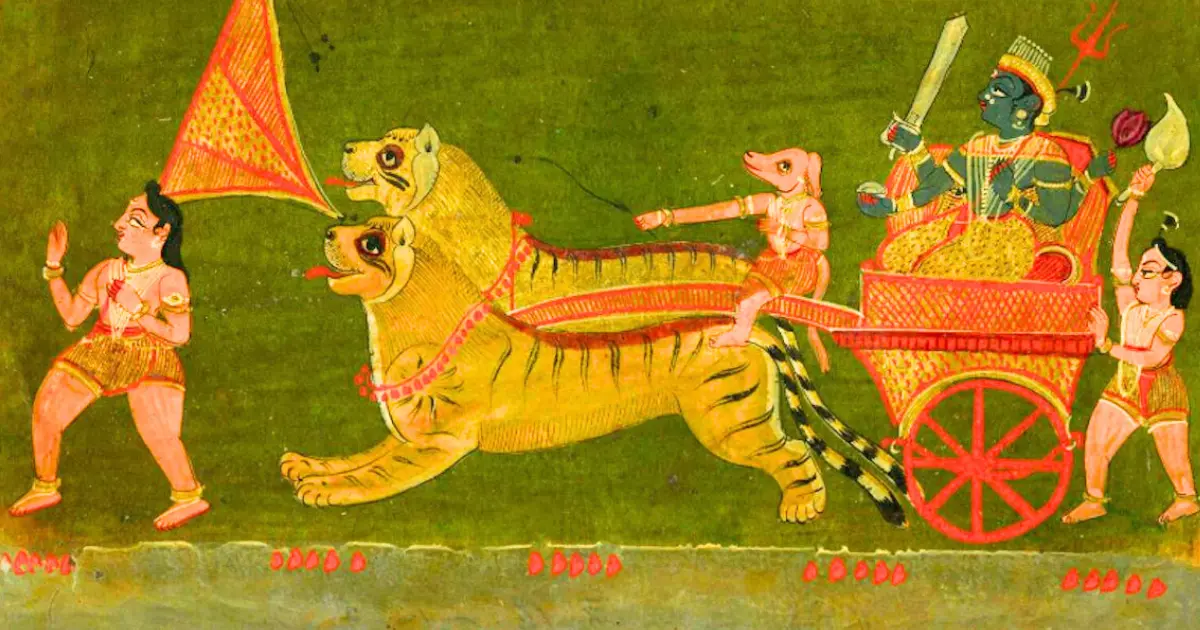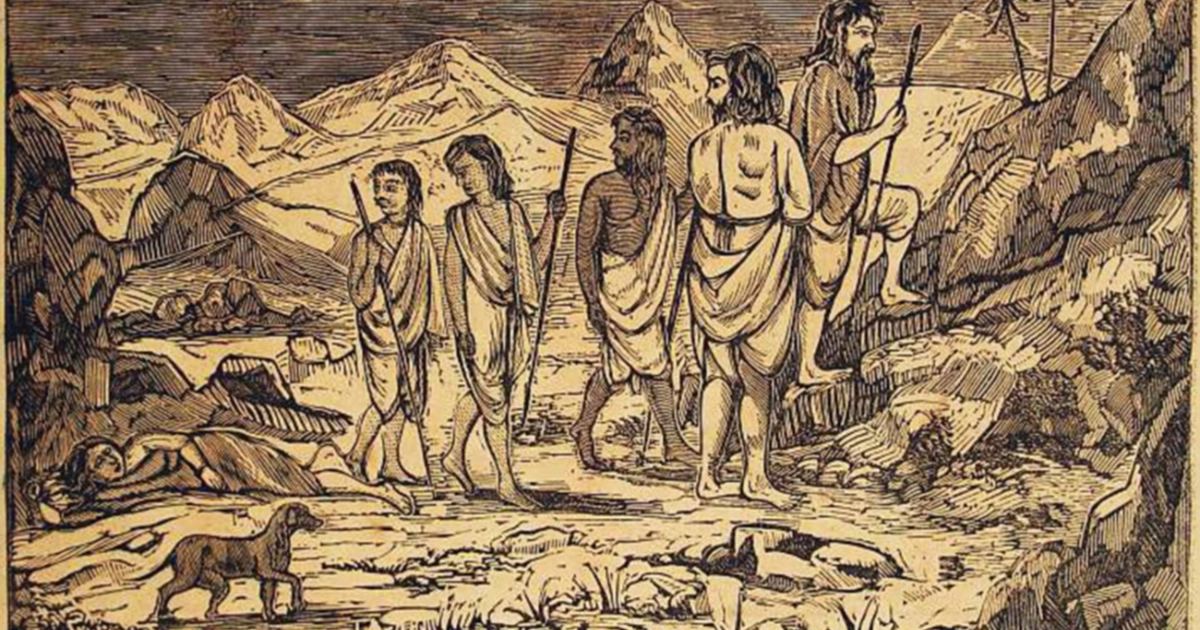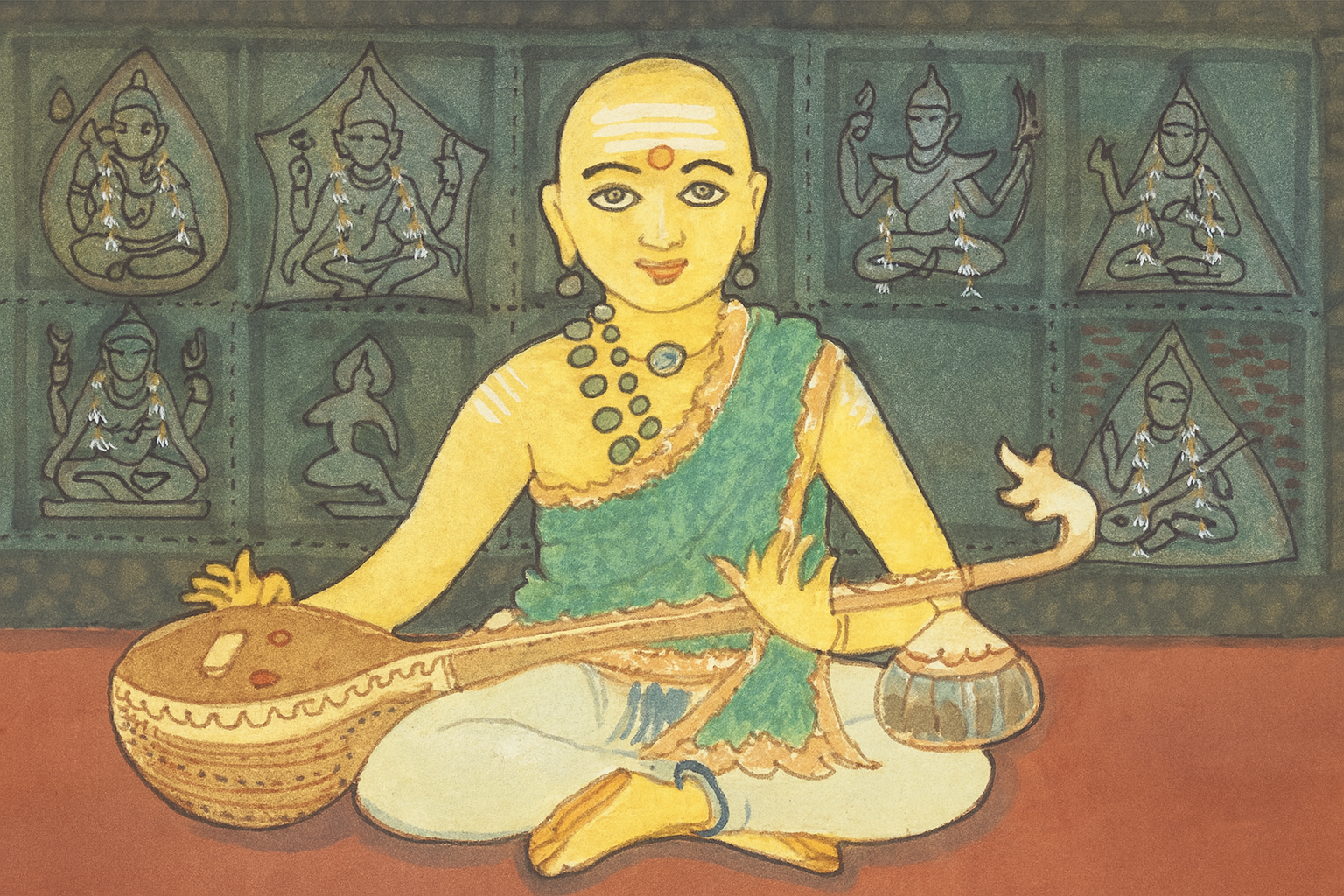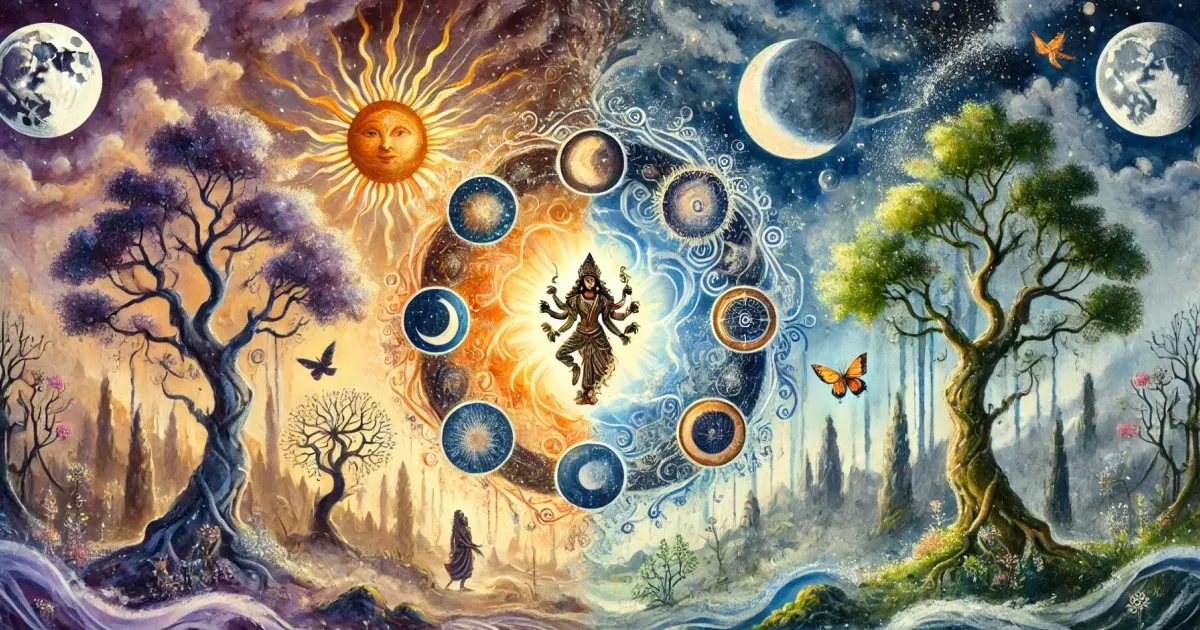O Lord of the Gods! Take away from me all attachment To the bonds of this world that are so impermanent! Its useless pleasures are all evanescent! O Lord of the Yādava clan! Dissolve all my sins through your compassion! O Lord and Master of the lowly and the fallen! Bestow on me the benediction That I may find, beyond this mortal existence, a secure seat Close to my true haven, next to your lotus feet! O Lord Jagannātha, Lord of the Universe! O my Master! Grant my eyes a glimpse of your beauteous countenance. Jagannāthāṣṭakam, Jagadguru Ādiśaṅkarācārya
Puri, known as Śrikṣetra or Puruṣottama Kṣetra has been a sacred site for time immemorial. The Blue Hill (Nīlādri, or Nīlācala, the conch or tortoise-shaped hill and eternal abode of Śrī Jagannātha, Śrī Baladeva, Śrī Subhadrā and Sudarśana cakra) on which the temple is situated is known as the eternal place, the nityaśāla of Kṛṣṇa. Jagannāth, has been there since the beginning of creation and shall remain for all of time to come. In fact, the Balarāmadāsā, the famed Odiya bhakti poet, in his Vedāntasāraguptagīta says, “Vṛndāvana, Mathurā, Dvārakā, and Ayodhyā, which have originated from the Nīlācala only contain but a portion of the glory of Puri”.
Apart from the daily rituals (dainika nīti) such as maṅgaḷa ārati, abaksa (symbolic bath and brushing of teeth), vesha lagi (dressing), rosa homa (yajña that takes place in the temple kitchen before the preparation of the mahāprasāda), Sūrya pūjā, dvārapāla pūjā, bada simhara bhoga (in the late evenings, the triad is dressed in a special cloth called the Gītāgovinda Khandua, and Jayadeva’s Gītāgovinda is recited to them) etc., special worship, adornment, and festivities take place on particular days and auspicious occasions such as eclipses, ekādaśi, and festival days.
Of the twelve major festivals that take place annually at Puri, the rath yātra is the most widely known, due to being extensively documented by the colonial government officials and Christian missionaries in the 19th century. The festival was so widely known that the word “Juggernaut”, the anglicised word for Jagannāth, entered the English language in the early 19th century to mean “a powerful, dominant, unstoppable force”. The British encountered the massive chariot (ratha) of Jagannātha being pulled through the streets by devotees during the rath yātra, a picture that soon became representative of the zealousness of heathen idolatry to the British. However, besides the rath yātra, there are other, lesser known, more intimately conducted rituals that take place: of note are those associated with the Navakalēvara. This piece describes the fascinating ritual of Navakalēvara that happens periodically at Puri — with special attention paid to the involvement and crucial importance of non-brahmin jātis and tribes in various rituals — which speaks to the syncretism and inter-dependence of various castes at the shrine.
Divine Embodiment in the Hindu Worldview
“There is no religion in the world that more fully expresses this process of apotheosis and destruction than Hinduism. The Hindu sacred image (or mūrti) is extraordinarily polymorphic and ubiquitous. Such images of divinity are lifeless until ceremonies of installation are performed. Thereafter the image is the deity, not merely a symbol of it.”1
In Hindu practice, the life-force of the deity is invoked into the mūrti through subtle and elaborate rituals known as prāṇa-pratiṣṭha, the ‘installation of the life-breath’. Pratiṣṭhā rituals serve to bring divine presence into the material realm, and transform the physical mūrti into a suitable medium. Priests and devotees then proceed to treat the now-enlivened image as the deity itself, through continuous liturgical activity. Specific rituals are prescribed by the applicable āgama śāstras for the awakening, bathing, dressing, feeding, praising, and even entertaining the deities on a daily basis. The performance of marriage and coronation ceremonies, among others, are also conducted on specific dates and times according to the pañcāṅga (calendar). The deities so established have powers that extend beyond the ‘religious’ realm — they act as witnesses, sovereigns, and in modern legal frameworks, possess a distinct legal personhood.
The Navakalēvara Ceremony
At the Jagannāth Temple in Puri, the periodic re-casting and consecration of the mūrtis of Śri Kṛṣṇa as Jagannāth, his brother Balabhadra and sister Subhadrā take place through a series of highly secret rituals, called Navakalēvara or ‘New Embodiment’. The ceremony takes place every 12 or 19 years (determined astrologically), in a year with two Āṣāḍhas. The most recent one was carried out in 2015.
The ceremony is, on a metaphysical level, an analogy for the cycle of birth, death and re-birth, and is described in the texts Vanayāgavidhi (the method of the forest-sacrifice) and Calaśrīmūrtipratiṣthāvidhi (the procedure of the consecration of the holy movable images). James Preston in Creation of the Sacred Image: Apothesis and Destruction in Hinduism, postulates that the periodic renewal of the icons of the triad is a continuation of a long-standing tribal practice, performed to demonstrate the ephemeral nature of these sacred images.
The Puruṣōttama Māhātmya of the Skanda Purāṇa says that Jagannātha is made of dāru (wood) because a dāru image cuts up the miseries of the world and imparts eternal bliss. The text also profoundly states that in reality, the Lord of the Universe is neither made of wood nor stone, and that He assumes these forms or arcāvatāras2 merely to delude the world.
The beloved god Jagannāth acquired a wooden form (dārurūpa, dārumaya) after Śrī Kṛṣṇa himself promised devotees that he would be reincarnated in a wooden form in the Kaliyuga. This divine promise is elaborated upon in the sthala purāṇa of the kṣetra: the story goes that Śrī Kṛṣṇa, while resting in the forest, was shot by the tribal hunter Jarā, who mistook the soft pink soles of Śrī Kṛṣṇa’s feet for the ears of a deer. Upon realising his mistake, Jarā was inconsolable, but Śrī Kṛṣṇa insisted that the happening was preordained. He asked that Jarā inform the Pāṇḍavas to cremate him. A part of his body, the heart, remained unburnt, and turned into a fossil. In the form of a fossilized log of wood, this body came floating down the Mahānadī river, only to end up stranded at the Puri beach. The sacred dāru was brought ashore by Vidyāpati and Viśvavasu (ancestors of the daitā jāti).
A feeble old man appeared (said to be Śrī Jagannāth himself, or in some versions of the story, Viśvakarma, the celestial architect) and offered to carve it, provided he was allowed to work in a locked chamber undisturbed, and the door must not be opened under any circumstances. However, before the agreed time period was up, the impatient Queen Guṇḍicā, who could not contain her curiosity, peered into the room prematurely. The old man disappeared and on the platform were figures with only stumps for feet and hands. Despite the unfinished nature of the images, the temple was consecrated by Indradyumna.
The practice also refreshes public memory of a historical event: during the Marāṭha occupation of Orissa, images of Śrī Jagannātha had to be hidden (probably buried) multiple times in anticipation of Muslim attacks, then subsequently exhumed and re-carved. The removal of the deities from the sanctum, their movement and handling probably caused considerable damage to the wooden images, frequently necessitating their renewal. During this turbulent political period, navakalēvara became a regular occurrence, and had the advantage of reminding devotees that the icons of Śrī Jagannātha were perishable and transient, while the essence of Śrī Viṣṇu is immortal. The new images are constructed exactly as the previous ones, with the only continuous element being the divine substance, brahmapadārtha (see note 3). The ceremony is elaborate and expensive, and only performed when the wooden images begin to show signs of decay.
Navakalēvara consists of five phases:
- the selection of the dāru or the tree trunk with the prescribed characteristics, fashioning into a log and bringing it to the Temple
- the carving of the wood into mūrtis in a sacred space behind closed doors by the daitās
- the prāṇapratiṣṭhā or consecration of the mūrtis and their infusion with the brahmapadārtha
- the burial of the older images of the triad, their funeral, and the purification rites of the daitās
- the final purification, covering the new icons with cloth, their painting and final establishment by the Brahmins
The ceremony is briefly described in the following passages. For a more detailed account, refer to G. C. Tripathi’s account, published in The Cult of Jagannath and the Regional Tradition of Orissa (1978).
Vanayātra and Vanayāga: The Forest Rites
On the 10th day of Caitra, initial rituals mark the beginning of the yātra for the search for the dārus, including the selection of the daitā chiefs and their presentation with silken cloths, the receiving gifts and blessings from the king, after which the process formally begins. A vanayātra is undertaken by a party of 21 daitās and Brahmins, accompanied by conches, trumpets, drums and gongs from Purī to the Maṅgalā Temple in Kākaṭpur village, on the banks of the river Prācī, about 55 km away. The Maṅgalā Devī Temple is surrounded by a dense forest of Nīma trees, the only wood that is employed for the construction of the sacred images. The Goddess is bathed in an elaborate ceremony, offered garments and mahāprasāda from the Jagannāth Temple. The head daitā, the patimahāpatra, prepares himself to receive, through a dream, information regarding the location of the dārus or the trees that may be used for the creation of the sacred images. Four trees are selected with great care, and must fulfil certain criteria. The appropriate tree must have bark of a certain color (dark or dark red for Jagannātha, light brown for Balabhadra, yellowish tinged for Subhadrā, and reddish for Sudarśana) must have a certain shape, and a specific number of main branches. They must not be infested with termites, or situated near an ant-hill. There is a detailed list of further criteria for each, but the characteristics of those of Jagannātha are sought more strictly. The search for the dārus may last a couple of weeks. When a tree fulfilling the criteria is successfully traced, the party circumambulates the tree, smears it with sandal paste and vermillion, offers flowers, and wraps a new piece of cloth around it. The bhūtas (spirits) living on or near the trees are then propitiated with offerings of grains and spices, and Śrī Viṣṇu is asked to command them to leave. Then, a yajñaśāla (sacrificial pavilion) is built by clearing space around the tree. After the requisite aṅkurāropaṇa (sowing of seeds for germination) and haviṣyānna (partaking of food) are completed, the Brahmins perform a specific fire sacrifice, the vanayāga.
Through the repetition of mantras, Śrī Viṣṇu is asked to assure the party, through a dream with either good or ill omens, as to whether the dāru is acceptable to Him or not. Axes of gold, silver, and iron are smeared with sandal paste, vermillion, ghee, honey, flowers, and worshipped with the astra-mantra. Amidst the chanting of Vedas by local Brahmins, the carpenter class of daitās, called mahārāṇās cut the trees, and carefully fashion logs of the prescribed length. The log is stripped of its bark, wrapped in silk, and sent to Puri with a group of 5-7 daitās.
Carving of the Images
The temple is closed to the public for six weeks while the next phase of rites take place. In the first two weeks, the icons of the Jagannāth triad are carved (nirmāṇa) by the mahārāṇās behind closed doors, in a special maṇḍapa called the nirmāṇa- maṇḍapa within the temple. No other person, Brahmins notwithstanding, is allowed to enter this pavilion during this time, to see or even hear the act of carving. The Puruṣōttama Māhātmya of the Skanda Purāṇa strictly forbids anyone from observing or even hearing this sacred act of creation, and it is believed that one who does so will become deaf or blind. To prevent this from happening, even accidentally, the sound of carving is drowned out by continuous sound produced by musical instruments. The details of the carving itself, as well as the exact measurements for each image is closely guarded knowledge kept by the daitās, who fashion the images according to the specifics contained in palm-leaf manuscripts and knowledge passed on through their familial traditions. All four images are carved with a cube-shaped cavity, in which the sacred brahmapadārtha3, the “soul” of the image, is placed.
Consecration of the Images
Due to the immense importance of the consecration, the procedure is extensive, and takes place in a special pratiṣṭha-maṇḍapa. First, preparations are made and specific subsidiary deities are worshipped. The dāru is endowed with prāṇa (life), flesh, blood, and sense organs through the prāṇa-pratiṣṭha mantra being uttered one hundred times. As prescribed by the Calaśrīmūrtipratiṣṭhāvidhi, the pratiṣṭha-maṇḍapa is first consecrated. A Cakrābjamaṇḍala is drawn in the south-east corner of the altar, upon which a metal image of Lakṣmī-Nṛsiṁha is placed. A fire-sacrifice and bali to the bhūtas and dikpālas are performed. Nugteren mentions the host of accompanying ritual actions that take place along with the consecration process in Gods of wood, Gods of Stone: The ritual renewal of the wooden statues at Puri in Belief, Bounty, and Beauty (2005):
Connected with this process of consecration is a considerable number of other ritual acts, such as a fire-sacrifice in which, in the course of five consecutive days, 10,000 āhutis are offered to Nṛsimha. On the seventh day, ten fishes, still alive, are brought into the temple compound, offered to the ten dikpālas, and buried outside, in the ten cardinal directions.Then in the course of the next three days, there are 1008 offerings to Bhalabhadra, Jagannāth, Subhadrā and Sudarśana, each of them accompanied by the deity’s own mantra. After this, other deities are invoked as well, and offered to: Śiva, Durgā, Bhairava, as well as the deities of rivers, oceans, stars, etc. When the whole of this consecration process has come to an end, the nyāsadāru is cut into four equal parts. These are put into boxes, and given to the patimahāpatra.
A piece of wood cut from one of the dārus, called the nyāsa-dāru (nyāsa meaning placement, or deposition) is contemplated as the deity, and remains the focus of all the consecration rituals performed by the Brahmins. The nyāsa-dāru is propitiated with an elaborate abhiṣeka, with the Brahmins reciting Puruṣasūkta for Jagannātha, Rudrādhyaya or Nīlāsūkta for Balabhadra, and the Śrīsūkta for Subhadrā. Thereafter, pūjā with the sixteen upacāras is done to the accompaniment of the Nṛsiṁha gāyatri or the Anuṣṭubha Nṛsiṁha mantra. The next day the priest meditates upon the dāru as the god Nṛsiṁha and performs an Āvaraṇapūjā, for the purpose of imparting the character of Nṛsiṁha to the dāru. Thereafter, the dāru is charged with the nyāsa of the Jagannātha triad.
By this time, the carving of the images has been completed, which are then taken to circumambulate the temple thrice on consecutive nights. The new sculptures are then brought inside the temple, and placed in the enclosure before the sanctum (Aṇasara-graha) near the old vigrahas. The old mūrtis are stripped of their coverings in order to transfer the brahmapadārtha, a crucial process entrusted exclusively to the tribal daitā community. All the brāhmaṇas should have left the temple premises, with only the daitās and the patimahāpatra remaining inside. All the lights in the temple are put out, and the patimahāpātra opens the belly of the old image in the dead of the night while blindfolded and his hands wrapped up to the elbows in cloth — so that he neither sees nor feels the substance. Thus, the composition of the brahmapadārtha is not even known to the daitās who bear this responsibility. The container with the brahmapadārtha is taken out of the old image and placed in the new one, and the cavity is covered with the nyāsadāru as a lid, after having been consecrated by the Brahmins for two weeks.
This unique rite, performed in darkness and secrecy, is the culmination and the most crucial point of the Navakalēvara. It is what confers meaning upon everything, and re-energises devotion and re-affirms the deities, their form, their history, their rituals, their place in the pilgrimage tradition, His place as the avatāra of Śrī Viṣṇu, their basis in scriptural traditions, connections with the local past, and, crucially, their consonance with the overarching Hindu philosophy of brahman, ātman, and re-birth. God is not only present in the Jagannātha mūrtis themselves, but their divinity is more firmly established by the essence of brahman hidden in their cavity.
Burial of the Old Images
As soon as the brahmapadārtha is taken out, the icon is considered “dead” for all intents and purposes. They are taken to a place known as Koili Baikuntha (kaivalya vaikuṇṭha), the graveyard where all the old deities are buried. The daitās begin to weep, and mourn Jagannātha, whom they consider one of their clan. They remain in a state of aśauca (ritual impurity) for ten days henceforth (in observance of the typical mourning rites as prescribed by the Dharmaśāstras). On the tenth day, they arrive at the temple near the muktimaṇḍapa and rub oil on their bodies, after which they take a purificatory bath in the tank. On the 12th day, the daitās host a feast (mṛtyubhoja) to the servitors of the temple. As heirs to the ‘deceased’ Jagannātha, the daitās receive compensation from the temple as inheritance, and also keep the relics of the old mūrtis.
The Final Form
During the aśauca period of the daitās, no further rites take place on the new images, which are entrusted to temple servants called Datta Mahāpātras, said to be from the Kāyastha caste. They are entrusted with the task of supplying the “flesh” and “blood” — the seven dhātus4 — to the new images by anointing them with various substances and wrapping them in cloth. The images are then handed over to the Citrakāras, who paint the images in two days with natural pigments — charcoal for black, mother-of-pearl for white, turmeric for yellow, etc. — except for the pupils, which are painted on by the Brahmin priests. On the next new moon, the first day of the bright Āṣādha, there is the ritual painting of the eyes, called the netrotsava. The new gods are then bathed twice, and after the final act of purification, shown to devotees, who are all eager to have a look at the new figures. This darśana of the young deities is called navayauvana-darśana, which marks the end of the Navakalevara sequence of rituals. The rath yātra begins the next day with the newly fashioned images, to the immense joy of the devotees, that celebrate with pomp.
Intra-religious Pluralism
The Puri Jagannāth temple complex functions as an eclectic amalgam of over eighty sub-castes that serve the deity, including both Brahmin and non-Brahmin priests. Non-brahmins occupying certain roles in temples is not peculiar to the Jagannāth Temple alone, nor is it unique to temples of Odisha. At the Liṅgarāja Temple in Bhubaneshwar, members of the Śūdra Baḍu sub-caste are alone allowed to bathe Liṅgarāja, to adorn him, and carry His processional image outside the temple. Similarly, in the Jagannāth temple, the śūdra caste of daitās play an important role in the temple, and particularly during the Navakalēvara ceremony. The daitās have important ties to Jagannātha and the temple, as they claim to be His closest kin6. They assert their rightful duty to carve the images, dress the Lord, move His processional icons, carry out annual repairs to the images, and conduct the important Navakalēvara ceremony. For instance, during the summertime Snāna Jātara, the deities fall ill. This is followed by a two-week period of ritual convalescence, during which they are under the exclusive care of the daitās, who feed them fruits and berries and treat them with medicinal herbs and roots, and no cooked food is offered.
According to Preston, the daitās are an inseparable part of the landscape of the shrine:
“The periodic recreation of the sacred images preserves their art and function as caretakers of the deities. Unlike other artisans involved in the creation of sacred images in Orissa, the Daitas are also priests who are closely involved in the Puri Vaisnava tradition. Their restricted role in the ritual of Jagannath does not diminish their overall importance as members of an eclectic array of service castes assigned to the deities at the shrine. [emphasis added]”5
The Navakalevara may be situated as part of a far wider chain of legitimation, justification, regulation and integration processes. Vedic, epic, Purāṇic, śāstric and tribal elements all blend together in the sequence of the Navakalevara rituals. All the varṇas and jātis dine communally, and the king himself acts a servant to the Gods, expressed through his role in the Navakalēvara and his assignment to other tasks such as sweeping Jagannāth’s chariot during the rath yātra. There is an interplay of various layers of Odiya Hindu culture, mainly between brāhmanic and tribal traditions and royalty, and woven through that interaction, is the iconological, theological, literary and sāmpradāyic history of Orissa. The primacy of the role of the tribals is evident in the ceremony. It is the daitās who are wholly responsible for cutting and carving the raw material of the wooden logs, transfering the brahmapadārtha from the old bodies to the still-nude new ones, burying the retired images, entering a phase of mourning, and painting the deities’ characteristic faces of the Jagannāth triad. Brahmins, meanwhile, are neither allowed to see nor to touch the unfinished wooden images, not even for the sake of consecration. The nyāsadāru which they consecrate for 15 days only serves as a lid to close the cavity in the torsos, and seems to be a consolation for the Brahmanic ritual, of a secondary character.
It is only when the more śāstric portions of the procedure are to be carried out that the brāhmaṇas come to the fore: the pūjā in the Kākaṭpur temple, their knowledge of which special signs to look for during the search for the dāru; their expertise in the ritual prescriptions for the dārupūjā and vanayāga as well as for the pratiṣṭhā of the nyāsadāru; and their special roles in the netrotsava and navayauvana-darśana. Thus, the plurality of roles in the daily life of the temple, and in the other festivals throughout the year, is mirrored during the Navakalēvara ceremony, and vice-versa. The functioning of the temple, and in particular the method of the Navakalevara ceremony is a melding of countless aspects of Oriya culture. It is an exemplar of syncretism, with the harmonious coming together of mārga (traditional) and deśi (regional) practices and communities.
Footnotes
- Preston, James J., Creation of the Sacred Image: Apothesis and Destruction in Hinduism in Gods of Flesh, Gods of Stone: The Embodiment of Divinity in India edited by Joanne Punzo Waghorne and Norman Cutler. New York Chichester, West Sussex: Columbia University Press, 1985, pp. 9.
- Arcā is the material form of a deity. From the perspective of Śrivaiṣṇava theology, the divya maṅgaḷa rūpa of Śrimahāviṣṇu manifests in five different forms: (1) the Supreme, eternal (para) form, (2) caturvyūha or emnations — Saṃkarṣaṇa, Vāsudeva, Pradyumna, and Anirudhha, (3) avatāras or vibhava — Rāma, Kṛṣṇa, etc., (4) the antaryāmi or hārda, the non-material (aprākṛta) subtle form that resides in the human heart (just as the arcā in a temple), and (5) arcā, His permanent descent onto the earth in a form that can be worshipped by Śrivaiṣṇavas. Arcāvatāra is a real, often local manifestation of the deity, neither lesser than nor a symbol of other forms. Arcās can be classified into movable and immovable images: the fixed, primary image, called the mūla mūrti, and the movable, processional images, called utsava mūrti. See Vasudha Narayanan, Arcavatara: On Earth as He Is in Heaven, in Joanne Punzo Waghome and Norman Cutler, eds., with Vasudha Narayanan, Gods of Flesh/Gods of Stone: The Embodiment of Divinity in India. Columbia University Press; 1985.
- Some have also conjectured that the brahmapadārtha or life-substance is the remains saved (possibly in the form of ash) from the original icons of the Jagannāth triad burnt by the Muslims in their raid of 1568 A D., a custom that would establish a clear continuity with the original images. There is, however, no proof for this interesting idea. The life-substance transferred in the brahmapadārtha rites is most likely a sort of sálagrama (a black stone with a fossil ammonite, which is a coiled shell of an extinct mollusk sacred to Vaiṣṇavas). This is the opinion of the Brahmin priests at Puri, and we find support for this view when we consider that sálagramas are placed in new Jagannāth icons established in temples outside of Purl by Pun priests who are invited to consecrate such new images (G. C. Tripathi, Jagannātha, pp. 260 and 261).
- Flesh and blood are given to the wooden skeletons by the layering of various symbolic substances; (1) cloth strips = skin, (2) red yarn or cloth = blood, (3) resin = flesh, (4) perfumed oil = marrow, (5) sandal paste = fat, and (6) rice or wheat starch = semen. These layers are renewed each year after normal decomposition. They represent the body of the deity and must always be present when the images are viewed by the general public.
- Ibid., see note 1
- Both the Śūdra sub-castes, Baḍu and daitās trace their origins to a migrant tribal group from South India known as Śavaras, a forest dwelling hunting tribe which inhabits the hilly regions of Kaliṅga, and worshipped the Goddess Sthambeśvari (wooden pillar-goddess). Śavaras are believed to be the only ones capable of carving ritual images.
Bibliography
- Gods of Flesh, Gods of Stone: The Embodiment of Divinity in India edited by Joanne Punzo Waghorne and Norman Cutler. New York Chichester, West Sussex: Columbia University Press, 1985
- Nugteren, Albertina. Gods of wood, gods of stone: The ritual renewal of the wooden statues at Purī. In Belief, Bounty, and Beauty, (Leiden, The Netherlands: Brill, 2005) doi: https://doi.org/10.1163/9789047415619_005
- Pani, Subas. Blue hill, hymns to Jagannatha:(translations from Oriya & Sanskrit). Rupa, 2004
- Tripathi, G.C. ‘Navakalevara: The Unique Ceremony of the “Birth” and the “Death” of the “Lord of the World”’, in A. Eschmann, H. Kulke and G.C. Tripathi, eds, The Cult of Jagannath and the Regional Tradition of Orissa, New Delhi, 1978, pp. 223–65.
